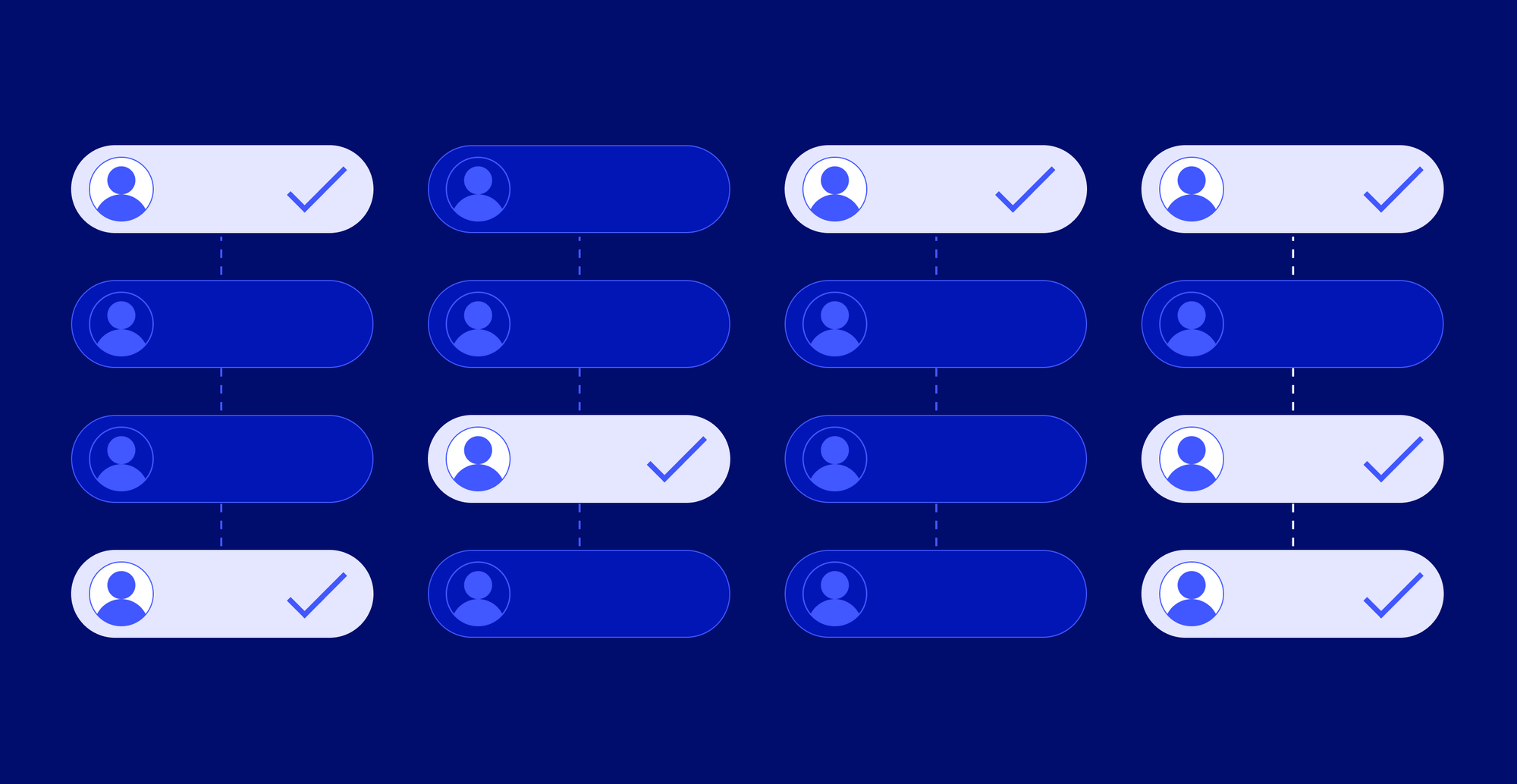How to set up a lead sourcing strategy
A well-developed lead generation strategy can achieve 133% greater revenue. Here's how to set up a lead sourcing strategy in four easy steps.
.jpeg)


Lead sourcing is the process of identifying potential customers with an interest in your product or service.
“A well-developed lead generation process can achieve 133% greater revenue versus their plan than average companies.” Source
The goal of a lead sourcing strategy is to source the right people with the right information, such as contact information, company information, buyer’s journey, etc. in order to help your sales reps reach out and convert them.
A lead generation strategy includes multiple touch points across the leads' lifecycle journeys. For example, the marketing team may engage them in an email campaign or target them with online advertising while the sales team will initiate cold calling. The type of touchpoint that is relevant for your business will depend on your strategy and the type of lead, but there are two important things to be successful:
Up-to-date, qualitative information about these potential leads to personalize your touchpoints with the right message
- Qualified leads to make targeted actions—rather than contacting a lot and converting little
Here's a quick 4-step framework for defining a lead sourcing strategy:
- Define your ideal customer profile (ICP) and target audience
- Find prospects that match your ICP
- Score these new leads
- Integrate them into your tools and processes to convert them into new customers
Step 1: Define your Ideal Customer Profile (ICP)
At a high level, a qualified lead is a lead who is ready to buy your product—the timing is right and there's a clear need for it.
Each company will have its own definition of what a qualified lead means for them. A qualified lead should always have defined criteria because spending time finding potential leads that are not your ICP is a waste of time.
A qualified lead must match your ICP/persona
To be qualified, a high-quality lead needs to correspond to your criteria (defined in advance with your sales strategy: persona, Ideal Customer Profil, target audience, etc). Your ICP can for example define:
- the job title of the best lead and the tools he works with
- his role and power in the company
- company criteria like industry, employee range, sector, ...
Your journey to find the best leads starts by defining your needs and interests in terms of target. You want to reach the people facing a pain your solution is made to resolve.
Your lead generation strategy must be focused on people with decision-making power
No need to convince your users if you can’t convince the buyer or decision-makers. Be sure to know who your champions are and differentiate them from the ones who drive the budgets.
Check soon as possible if your new leads are willing to pay to use your product.
A high-quality lead is in a momentum
50% of leads are qualified but not ready to buy (source)
If your prospect faces the pain you can solve and is aware of it, he will be in a position to hear you. Furthermore, if he has access to a purchasing budget, he will truly project using your product in the company's processes. So it will be a quick deal. You don’t want your SDRs and BDRs to only handle time-consuming deals if you want your ROI to scale!
Reminder of our 4 steps:
- Define your ideal customer profile and target audience ✅
- Find prospects that match your ideal customer profile
- Score these new leads
- Integrate them into your tools and processes to convert them into new customers
Step 2: Find prospects that match your ICP
After defining your persona, the goal is to make B2B lead generation that matches your Ideal Customer Profile. Lead gen methods are varied. An article from Snov.io details many of them. They will depend on your needs, your budget, your knowledge, etc...
We can see 2 categories: inbound and outbound lead sourcing. There are two main ways of generating leads: inbound (develop a brand and its products with adapted marketing for your prospects to directly come to you), and outbound (looking for prospects who might be interested in your product and directly contacting them to present it).
Qualified leads are useful for both. In this article, we will see the main actions.
Inbound B2B lead generation
With an inbound lead strategy, the prospect himself comes to the company. To make a good inbound strategy you must bring real added value to your prospect. Some examples of inbound actions.
Content marketing
Like articles, blogs, guides, lead magnets, podcasts, webinars, SEO, landing pages, social media, and all the content that brings real added value to your users. If you clearly give them the information they need, you will create a beneficial circle: brand image, quality content, prospects will come back and contact you.
Outbound B2B lead generation
With an outbound strategy, it’s the company that will go and gets the prospect. This strategy is more frequent but more complicated to convert because it’s the company that contacts the prospect.
It is essential to have the right information to make a difference. Send personalized messages and convert. For example, personalized emails improve the click-through rate by 14% and the conversion rate by 10% (Aberdeen).
Lead generation campaign
A marketing campaign by cold emailing is the less expansive outbound technique if you have the right tech tools and good copywriting. Copywriting is essential to succeed.
Your copywriting must be personalized according to the needs and context of each contacted person. You must have up-to-date contact information to address them properly.
To make email marketing part of your marketing strategy you may be tempted to buy an email list. This solution seems simple but it’s not the best one. Expensive, the email list is often not up to date and quickly becomes expired. The best solution is to take a lead generation tool that will generate qualified leads and integrate them into your marketing and sales pipeline.
Cross campaigns
If you want to be the most efficient, you should try to mix different strategies. Imagine a campaign where you first reach your leads by e-mail, then by phone, or on professional social media like Linkedin.
Ultra personalization and adapted content
The more you have criteria to qualify your potential leads, the more you know them. And you should use this information to address them.
In your outbound campaigns, use multiple variables to create proximity with your recipients, that’ll catch their attention. Use their pain points to highlight your value proposition. You are here as their problem solver.
Reminder of our 4 steps:
- Define your ideal customer profile and target audience ✅
- Find prospects that match your ideal customer profile ✅
- Score these new leads ❌
- Integrate them into your tools and processes to convert them into new customers ❌

Step 3: Score your new leads
Now that you have defined your persona and generated leads, you need to score them in order to qualify and prioritize them! 79% of B2B companies do not score their leads. What a waste of time when you know that by scoring your potential leads you can prioritize your actions and be more efficient.
Before talking about automation and integration, let's talk about scoring. Lead scoring is a technique for scoring prospects to detect those who are most ready to buy. The goals: salespeople focus all their efforts on the hot leads generated by the marketing team.
Lead scoring is the ability to evaluate the maturity of a prospect according to specific criteria for your company. By scoring your leads you will choose to contact them differently depending on their score. Your salespeople will not waste time cold calling with cold leads. But they will cold call with hot leads and have a better conversion rate.
Reminder of our 4 steps:
- Define your ideal customer profile and target audience ✅
- Find prospects that match your ideal customer profile ✅
- Score these new leads ✅
- Integrate them into your tools and processes to convert them into new customers ❌
Step 4: Integrate your lead gen in your processes
Generating leads if they are not actionable is a waste of time. Your lead gen must be integrated and accessible in the tools you use.
Each company has a definition of MQL (Marketing Qualified Leads), SQL (Sales Qualified Leads), Sales-ready leads, qualified leads, etc... Whatever your definition. What matters is that your teams have the right lead, and the right information in the right place at the right time to convert your leads into potential customers.
After lead qualification and lead scoring, you can dispatch them in the adapted tools according to the touchpoints you want to make on it.
Basic integration: your CRM
Whatever your CRM (Hubspot, Salesforce, or another), your leads must be integrated into your CRM. Without integration how can your teams access and work on it? By fetching them from a dedicated tool? Waste of time!
So, if you want to use SaaS lead generation software, make sure that it has an integration with your CRM and can provide all the data you need.
Thanks to automation tools you can also make an optimization on the native integration in order to integrate your lead in the right step of your sales funnel for example. According to the step and to your sales process, your B2B sales rep will make different actions like:
- Social media messages (Linkedin for example)
- Personalized email
- Cold Calling (if you have the phone numbers)
Other integration like a marketing automation tool
Do you know that companies that opt for automated lead management see a 10% increase in revenue in 6 to 9 months (source)? In general, make sure that all your teams have the information in their usual tools. You can optimize your process but not make it less efficient.
For example, if your marketing team uses a marketing automation tool, give them all the data needed directly in that tool. Don't force them to go elsewhere to get the information.
Reminder of our 4 steps:
- Define your ideal customer profile and target audience ✅
- Find prospects that match your ideal customer profile ✅
- Score these new leads ✅
- Integrate them into your tools and processes to convert them into new customers ✅
Prospect smarter with live stakeholder mapping
One click in Salesforce reveals the entire verified buying committee with accurate contact details and keep stakeholders up-to-date. It’s not just “updated often” — it’s actually live.














